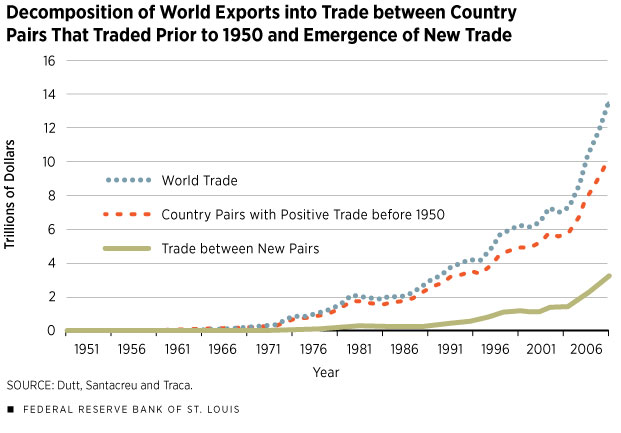Ask an Economist
Ask An Economist
Ana Maria Santacreu is an economist at the Federal Reserve Bank of St. Louis, where she has worked since September. Her research focuses on international trade, international macroeconomics and economic growth. She enjoys outdoor activities, especially hiking, biking and sailing. For more on her research, see http://research.stlouisfed.org/econ/santacreu.
Q. What's behind the dramatic increase in international trade? What can be done to increase it even further?
A.World trade has increased dramatically over the past few decades. What may be surprising to some people is that less than one-quarter of the growth in trade between 1948 and 2006 was due to the emergence of new trading partners. The large majority of the increase in world trade came from countries that had traded with one another since before the first year in the sample.
When discussing barriers to trade, people usually think of transportation costs, market access and tariffs. However, a survey of firms1 found that the biggest barriers to trade actually are:
- identifying contacts,
- understanding customers in the destination,
- coping with regulations and the legal environment, and
- building networks and relationships.
In a recent paper, my co-authors, Pushan Dutt and Daniel Traca, and I built on this insight and looked at the role of experience in international trade.2 We found that more experience between a particular exporter-importer pair of countries lowers bilateral trade costs and increases bilateral exports. This is because the accumulation of experience over time helps to overcome the informational, contractual and cultural barriers involved in trade.3 Our finding clarifies the large difference between trade flows among existing partners and new partners. The accumulated experience of countries that have been trading since before 1948 effectively makes trade with that country much cheaper.
The benefits of experience tend to be shared among firms and industries; so, this is where there is opportunity to help increase international trade: by supporting the entry of early exporters—those first few companies that start trading with a new country. This would lower the trade costs and encourage entry by new firms and products into export markets.
Endnotes
1 See Telephone Survey of UKTI Inward Investment and Trade Development Customers and Non-Users: Summary Report, OMB Research: London, 2005. [back to text]
2 Read the working paper, "The Gravity of Experience," at http://research.stlouisfed.org/wp/more/2014-041. [back to text]
3 Experience is measured as the number of years for which a pair of countries has been trading. [back to text]
Related Topics
Views expressed in Regional Economist are not necessarily those of the St. Louis Fed or Federal Reserve System.
For the latest insights from our economists and other St. Louis Fed experts, visit On the Economy and subscribe.
Email Us




